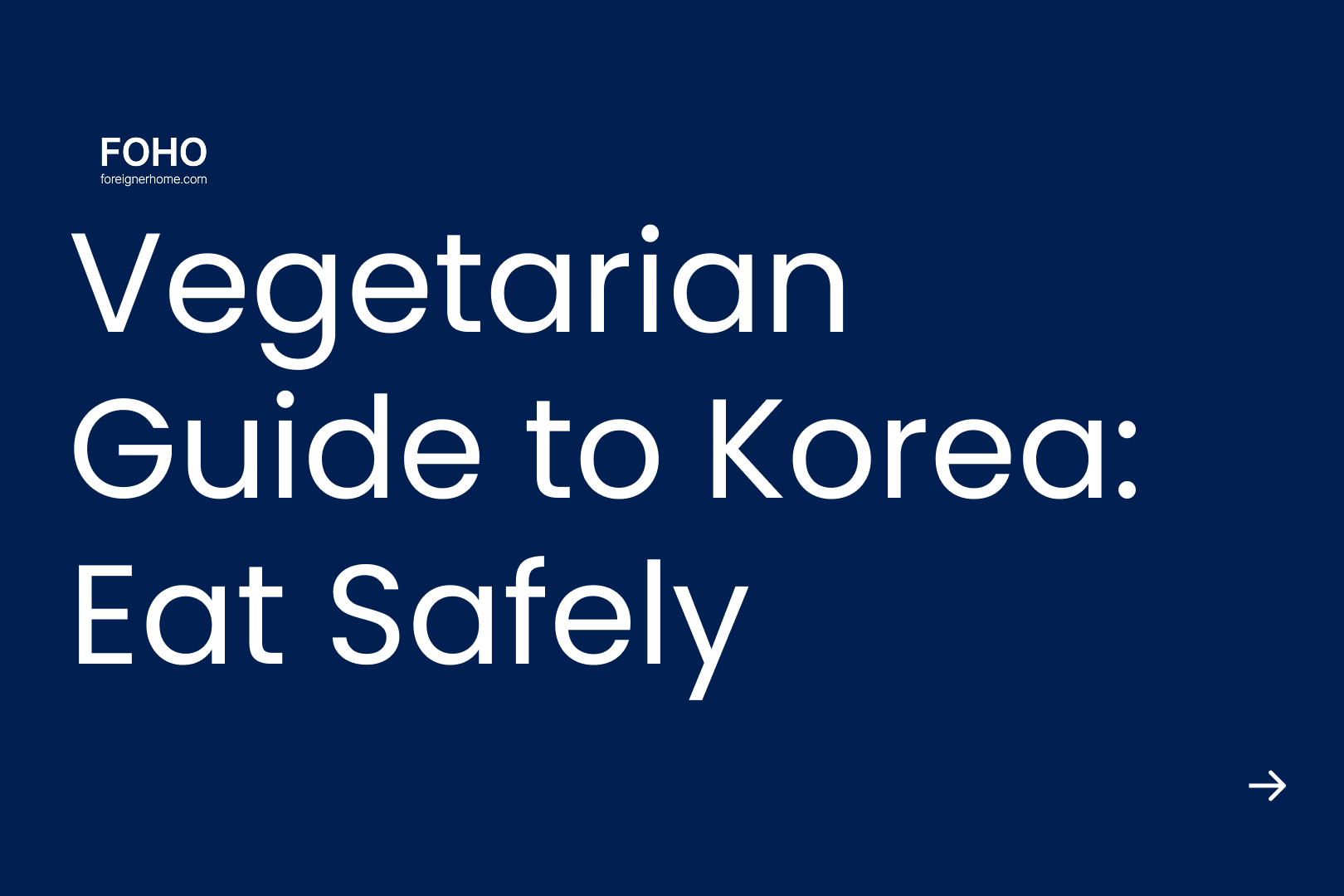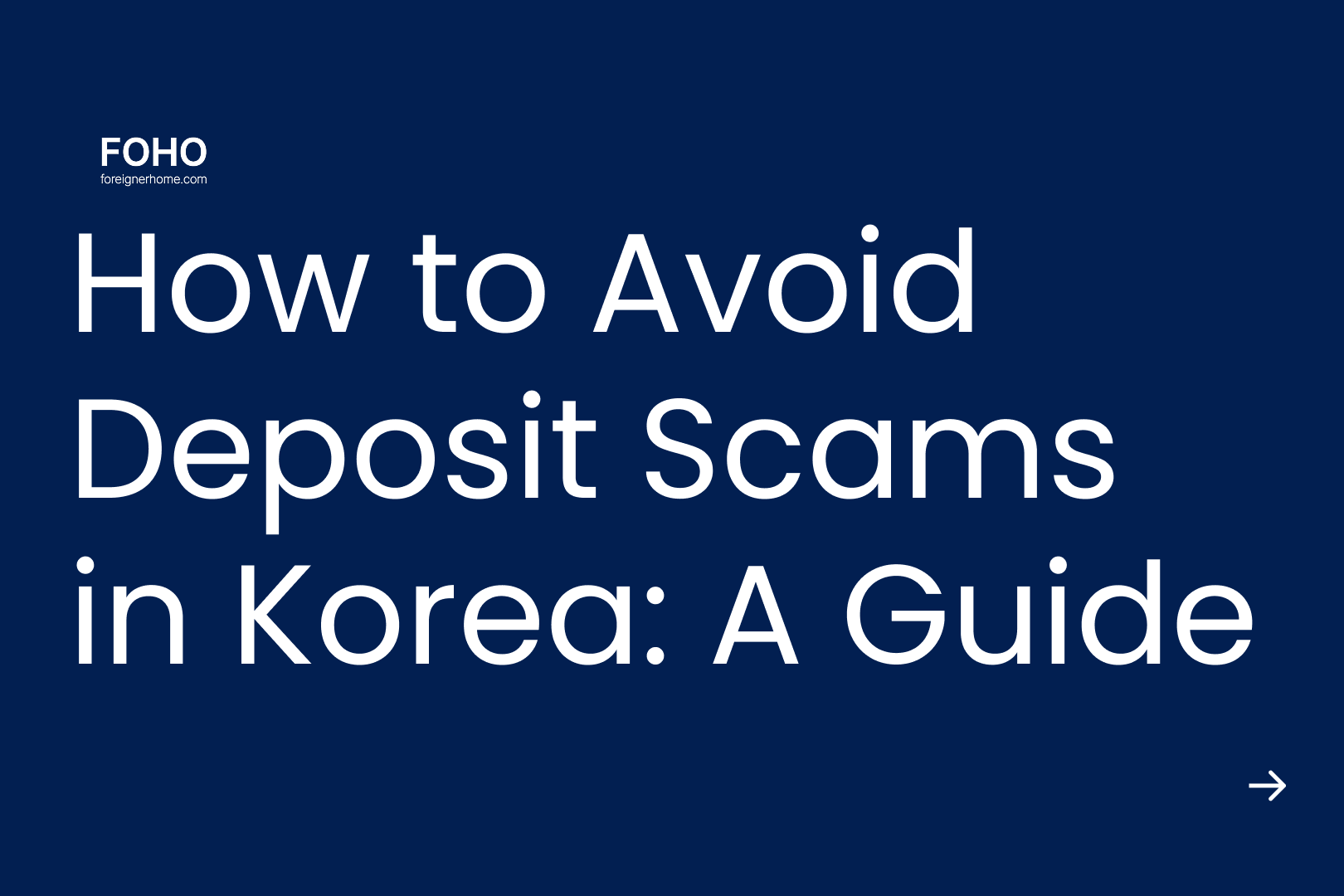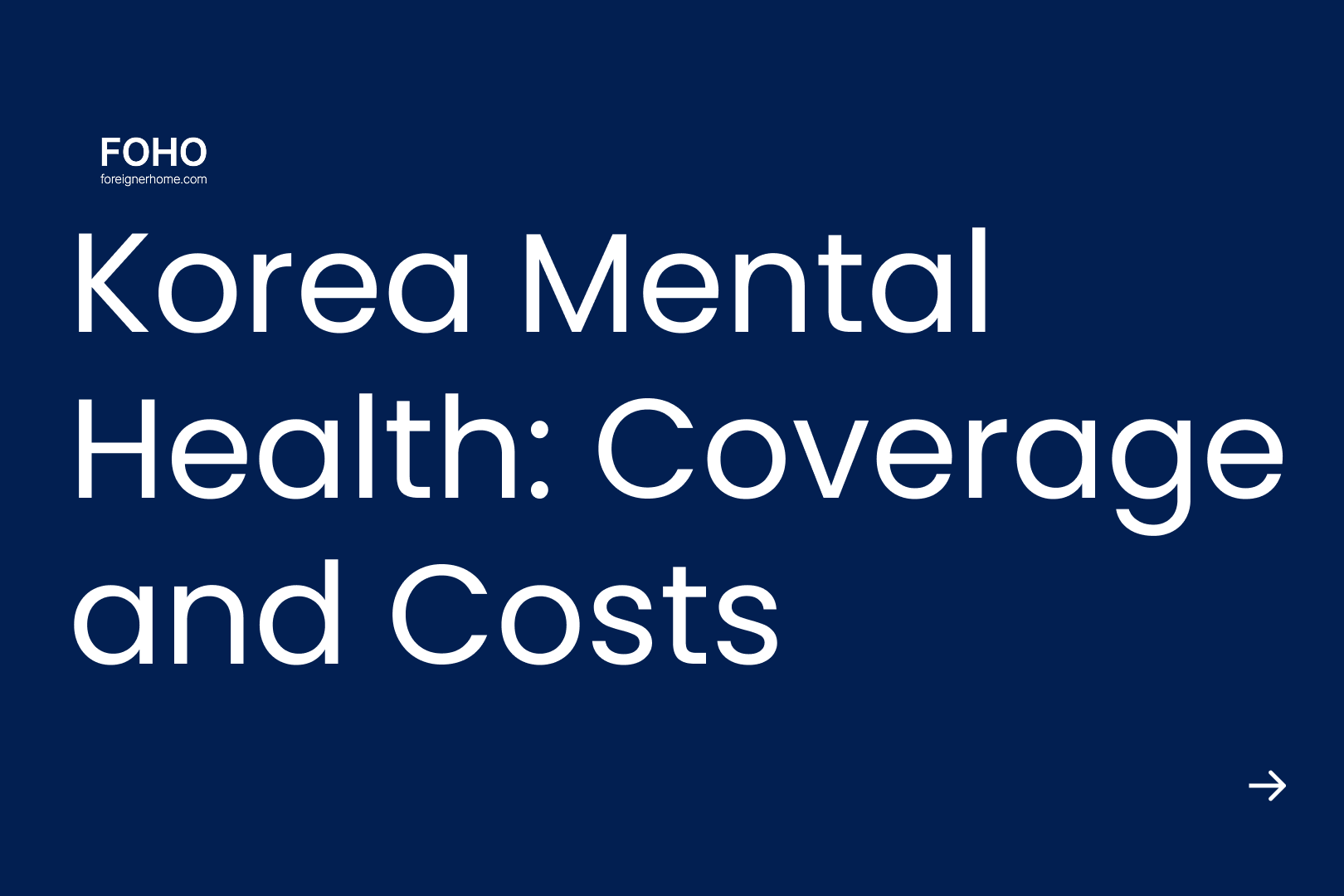FOHO Blog – Global Housing & Living Guide for Foreigners
Vegan & Vegetarian Guide to Korea: Eat Safely
Eating on a specialized diet in Korea is hard. Learn how to avoid hidden fish sauce or wheat and find certified vegan, Halal, or GF food with our guide.

Table of contents
- 01A Foreigner's Comprehensive Guide to Specialized Diets in South Korea: Vegan, Vegetarian, Halal, and Gluten-Free
- •Section 1: The Vegan & Vegetarian Experience
- •Section 2: A Guide to Halal Dining and Living
- •Section 3: The Gluten-Free Survival Guide
- •Section 4: Essential Toolkit for All Diets
- •Glossary of Korean Terms
- •Conclusion
- •Need a Home in Korea? FOHO Makes it Simpler and More Affordable.
- •Sources
A Foreigner's Comprehensive Guide to Specialized Diets in South Korea: Vegan, Vegetarian, Halal, and Gluten-Free
Section 1: The Vegan & Vegetarian Experience
The State of Plant-Based Eating
Dining Out: "Safe Havens" vs. "Navigable Minefields"
- Plant Cafe (Itaewon / Yeonnam): A popular spot known for burgers, salads, and baked goods [1].
- Monk's Butcher (Itaewon): An upscale choice for vegan steaks, cheeses, and wine [1].
- Balwoo Gongyang (Jongno-gu): A Michelin-starred restaurant offering refined, traditional Buddhist temple food [1].
- Bibimbap (비빔밥): Order without meat (고기, gogi) and egg (계란, gyeran). You must also ask if the gochujang (chili paste) contains a beef base, which is common [2].
- Japchae (잡채): This noodle dish is often vegetarian but can include beef. Request it without meat [2].
- Kimbap (김밥): These rice rolls usually contain egg, ham, and fishcake. You must request the removal of all three [4].
- Kong-guksu (콩국수): A safe summer dish of noodles in chilled soy milk. Order it without the standard egg topping [1].
The Vegan & Vegetarian Pantry
- Coupang (쿠팡): This is the most recommended e-commerce platform. It has a huge selection of vegan products and accepts many foreign credit cards, making it accessible upon arrival [4]. Its food delivery arm, Coupang Eats, is also useful [11].
- Gmarket (지마켓) & iHerb (아이허브): Gmarket is another large, accessible online market. iHerb is popular for supplements and imported snacks [9].
- Specialty Stores: In Seoul, shops like Vegan Space (Yongsan-gu) and Nono Shop (Itaewon) stock imported goods like Beyond Meat and vegan cheeses. Both also ship nationwide [12].
The "Umami Trap": Avoiding Hidden Animal Products
- Kimchi (김치): The vast majority of restaurant and store-bought kimchi is not vegan. It is fermented with fish sauce (액젓, aekjeot) or salted shrimp paste (새우젓, saeujeot) [4, 15]. Vegan kimchi is a specialty item.
- Broth (국, guk / 찌개, jjigae): Many soups, stews, and noodle dishes use a default broth made from dried anchovies (멸치, myeolchi) [5].
Section 2: A Guide to Halal Dining and Living
Understanding Halal Certification in Korea
- Halal Certified: The highest standard. These restaurants are formally certified by the KMF. They often have a Muslim owner or cook and serve 100% Halal food [19].
- Self-Certified: Owned by Muslims who attest that their food is Halal, but they have not undergone the formal KMF certification process [19].
- Muslim-Friendly: These restaurants offer some Halal dishes but also serve non-Halal items, including pork and alcohol. There is a risk of cross-contamination [19].
- Pork-Free: These establishments do not have a Halal menu but guarantee no pork or pork-derived ingredients are used [19].
Finding Halal Eateries
- Makan Halal Korean Restaurant (Itaewon): Certified, known for Korean Fried Chicken and Jjimdak [21].
- EID – Halal Korean Food (Itaewon): Certified, offers Samgyetang (ginseng chicken soup) and Japchae [21].
- Yang Good BBQ (Gangnam): A Muslim-friendly option for Halal lamb barbecue [21].
Stocking a Halal Kitchen
- Mehran Foods Korea: Sells Halal meats (beef, chicken, lamb), spices, and ready-to-eat meals [25].
- Albazaar Korea: Offers fast, next-day delivery of Halal meat and groceries [26].
- Yes!Halal: Provides KMF-certified meats and Indonesian specialty items like tempe [27].
Navigating Menus: Common Pitfalls
- Cooking Alcohol: Many Korean marinades and sauces contain mirin (미림, rice wine) or other forms of cooking alcohol [29].
- Cross-Contamination: This is a risk in kitchens that handle pork or at K-BBQ restaurants where grills are shared [30].
Section 3: The Gluten-Free Survival Guide
The Challenge: The "Three Jangs"
- Ganjang (간장, Soy Sauce): Most commercial soy sauce is brewed with wheat.
- Gochujang (고추장, Chili Paste): This spicy paste almost always contains wheat flour or barley as a thickener [31].
- Doenjang (된장, Soybean Paste): Many varieties include wheat [31].
Dining Out Safely
- Sunnyhouse (Seoul, Mapo-gu): A 100% GF restaurant and cafe run by an owner with celiac disease [8].
- 6Day Chicken (Seoul): A 100% GF restaurant specializing in Korean fried chicken made with a patented rice flour recipe [8].
- Zero Bakery (Seoul, Songpa-gu): Offers a wide selection of rice flour-based cakes and breads [34].
- What to order: Stick to plain, unmarinated cuts of meat that you cook yourself at the table. Safe options include samgyeopsal (삼겹살, pork belly) and moksal (목살, pork neck) [31].
- What to avoid: You must avoid all pre-marinated meats, such as yangnyeom-galbi (양념갈비), as the marinade is soy sauce-based [31].
- Pro-tip: Ask for a clean grill to prevent cross-contamination.
- Samgyetang (삼계탕): Ginseng chicken soup is often naturally gluten-free, but always confirm [31].
- Bibimbap (비빔밥): This can be safe only if ordered without gochujang [32].
- Japchae (잡채): The noodles are gluten-free (sweet potato starch), but the sauce is soy sauce-based. It is not safe unless the restaurant confirms they use a gluten-free tamari [35].
The Gluten-Free Shopper's Manual
- 보리 (bori): Barley
- 호밀 (homil): Rye
- 귀리 (gwiri): Oats
Section 4: Essential Toolkit for All Diets
1. Decoding the Labels: Certification Marks
- Vegan: Look for the Korea Agency of Vegan Certification and Services (KVCS) mark, a green, leaf-like 'V' [44].
- Halal: The Korea Muslim Federation (KMF) logo is the most trusted mark. It features green Arabic script and the KMF name [17].
- Gluten-Free: The Korean Gluten-Free Certification (KGFC) mark can be found on some domestic products, like Lotte's "The Ssalro" snacks [40].
2. Your Digital Toolkit: The "App Trinity"
- Discovery (To find safe food):
- HappyCow: The global standard for finding vegan and vegetarian restaurants [4].
- Korehalal Trip: An all-in-one app for Muslims, showing restaurants, prayer rooms, and prayer times [55].
- FindMeGF: Essential for celiacs. It's a user-rated database of restaurants with ratings for celiac safety [8].
- Navigation (To get there):
- Naver Map [1] or Kakao Maps [4]: Google Maps has very limited walking and driving directions in Korea. You must use a local app. Copy and paste the Korean address from your discovery app into one of these.
- Translation (To communicate):
- Papago: Developed by Naver, this app is widely considered superior to Google Translate for the Korean language. Its image translation feature is invaluable for reading menus and grocery labels in real-time [8].
3. Communicating Your Needs: Essential Korean Phrases
English Phrase | Korean (Hangul) | Romanization | Context / Notes |
General | ㅤ | ㅤ | ㅤ |
I have a food allergy. | 저는 음식 알레르기가 있어요. | Jeoneun eumsik allereugi-ga isseoyo. | A clear, direct way to state your condition [58]. |
Please remove [X]. | [X] 빼 주세요. | [X] ppae juseyo. | A polite request to omit an ingredient [60]. |
Does this contain [X]? | 이거 [X] 들어 있어요? | Igeo [X] deureo isseoyo? | The most important question to ask [61]. |
Vegan/Vegetarian | ㅤ | ㅤ | ㅤ |
I am vegan. | 저는 비건입니다. | Jeoneun bigeon-imnida. | The direct term for vegan [62]. |
Does this contain fish sauce? | 이거 액젓 들어 있어요? | Igeo aekjeot deureo isseoyo? | Crucial for kimchi, soups, and side dishes [7]. |
Does this use anchovy broth? | 멸치 육수 사용했어요? | Myeolchi yuksu sayonghaesseoyo? | Crucial for soups, stews, and noodle dishes [7]. |
Halal | ㅤ | ㅤ | ㅤ |
I cannot eat pork. | 저는 돼지고기를 못 먹어요. | Jeoneun dwaejigogireul mot meogeoyo. | Essential phrase for pork [29]. |
Does this contain alcohol? | 이거 술 들어 있어요? | Igeo sul deureo isseoyo? | For checking sauces and marinades [29]. |
Gluten-Free | ㅤ | ㅤ | ㅤ |
I have a wheat allergy. | 저는 밀 알레르기가 있어요. | Jeoneun mil allereugi-ga isseoyo. | The most direct way to explain your condition [63]. |
Does this contain soy sauce? | 이거 간장 들어 있어요? | Igeo ganjang deureo isseoyo? | Key question for almost any sauced dish [63]. |
Glossary of Korean Terms
- Aekjeot (액젓): Fish sauce.
- Banchan (반찬): Small side dishes served with a Korean meal.
- Bibimbap (비빔밥): "Mixed rice" bowl with vegetables and other toppings.
- Bori (보리): Barley.
- Bulgogi (불고기): Thinly sliced, marinated, and grilled beef.
- Doenjang (된장): Fermented soybean paste (often contains wheat).
- Ganjang (간장): Soy sauce (usually contains wheat).
- Gochujang (고추장): Fermented chili paste (usually contains wheat).
- Gogi (고기): Meat.
- Guk (국): Soup.
- Gye (계란): Egg.
- Homil (호밀): Rye.
- Japchae (잡채): Stir-fried glass noodles made from sweet potato starch.
- Jjigae (찌개): Stew.
- Kimbap (김밥): Seaweed rice rolls.
- Kimchi (김치): Fermented cabbage (usually contains fish/shrimp products).
- Kong-guksu (콩국수): Noodles in a cold, savory soy milk broth.
- Myeolchi (멸치): Anchovy (often used for broth).
- Mirin (미림): Sweet rice wine used for cooking.
- Mil (밀): Wheat.
- Moksal (목살): Pork neck, a popular K-BBQ cut.
- Samgyeopsal (삼겹살): Pork belly, the most popular K-BBQ cut.
- Samgyetang (삼계탕): Ginseng chicken soup.
- Saeujeot (새우젓): Salted shrimp paste.
- Tteokbokki (떡볶이): Spicy rice cakes.
- Yangnyeom-galbi (양념갈비): Marinated grilled ribs (marinade contains soy sauce).
Conclusion
Need a Home in Korea? FOHO Makes it Simpler and More Affordable.
Sources
- httpss://www.sgs.com/en-gb/services/vegan-and-vegetarian-certification
Settle in faster with FOHO
Browse more verified listings and message landlords in minutes. Lock in your lease with FOHO's secure payments.
Get Foreigner-Friendly Housing Tips
Get the latest news delivered to your inbox.

Oct 30, 2025
How to Avoid Deposit Scams in Korea: A Guide
Avoid deposit scams in Korea with our step-by-step guide. Learn to check property debt, understand the 'Deung-gibu,' and secure your deposit.

Oct 29, 2025
Korea Mental Health: NHIS Coverage and Costs
Get help with mental health in Korea. This guide for foreigners explains how to use NHIS, find low-cost options, and get medication prescriptions locally.

Oct 28, 2025
How to Find Community in Korea as a Foreigner
This guide for expats explains how to make friends in Korea. Learn the pros and cons of Meetup, local clubs, and apps like Somoim.

Oct 24, 2025
How to Buy a Used Car in Korea: A Guide for Foreigners
Buying a used car in Korea? This guide helps foreigners navigate SK Encar vs. K-Car, avoid scams, understand insurance, and register their vehicle.
Subscribe to the FOHO newsletter
Actionable housing insights in your inbox.